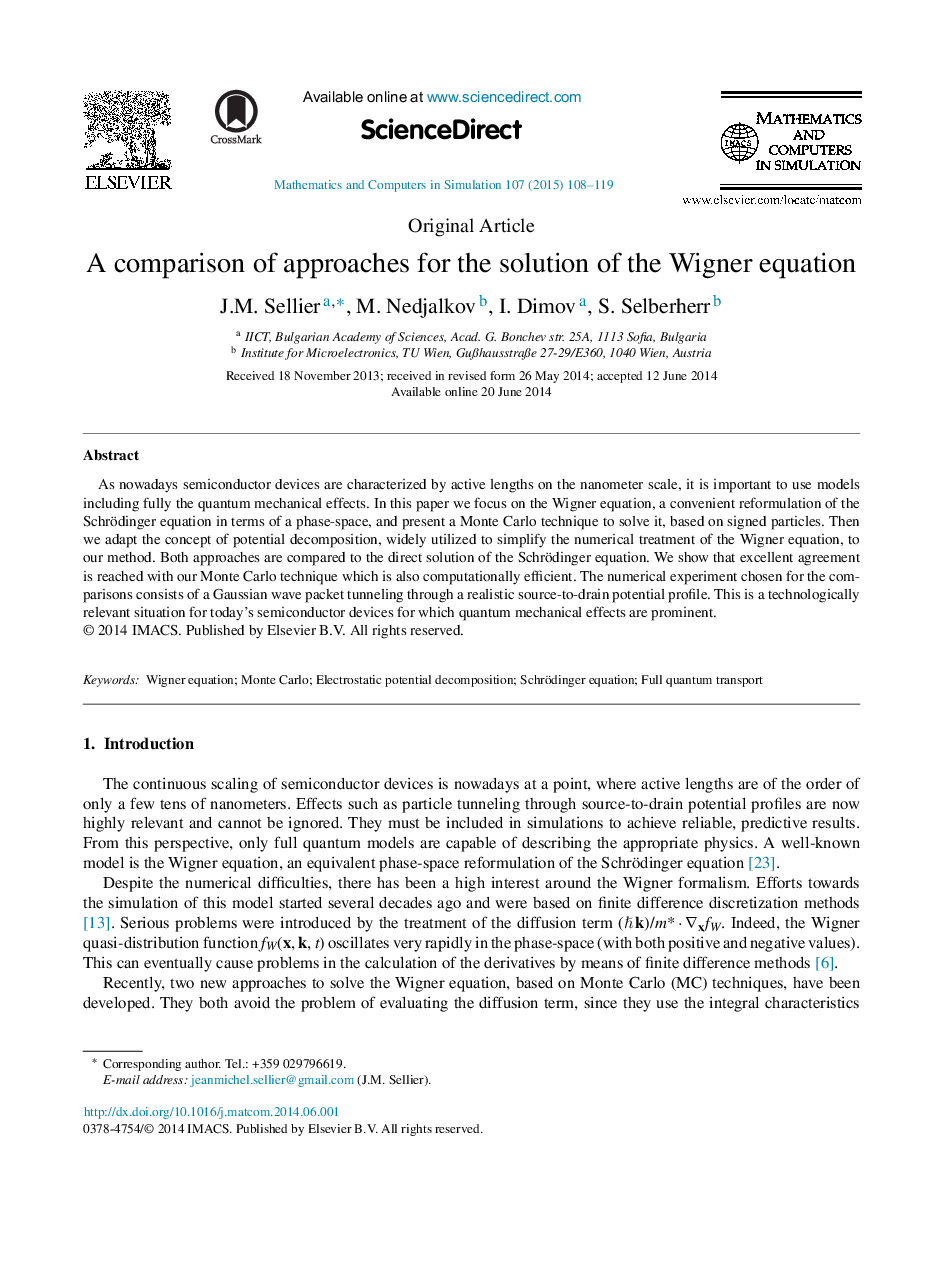| Article ID | Journal | Published Year | Pages | File Type |
|---|---|---|---|---|
| 1140352 | Mathematics and Computers in Simulation | 2015 | 12 Pages |
•We use the Wigner Monte Carlo approach.•We evolve a Gaussian wave packet in a previously calculated self-consistent electrostatic potential.•We decompose the potential into a classical and quantum part.•We compare the full Wigner Monte Carlo method and the potential decomposition technique to the benchmark solutions of the discretized Schrödinger equation.
As nowadays semiconductor devices are characterized by active lengths on the nanometer scale, it is important to use models including fully the quantum mechanical effects. In this paper we focus on the Wigner equation, a convenient reformulation of the Schrödinger equation in terms of a phase-space, and present a Monte Carlo technique to solve it, based on signed particles. Then we adapt the concept of potential decomposition, widely utilized to simplify the numerical treatment of the Wigner equation, to our method. Both approaches are compared to the direct solution of the Schrödinger equation. We show that excellent agreement is reached with our Monte Carlo technique which is also computationally efficient. The numerical experiment chosen for the comparisons consists of a Gaussian wave packet tunneling through a realistic source-to-drain potential profile. This is a technologically relevant situation for today's semiconductor devices for which quantum mechanical effects are prominent.
